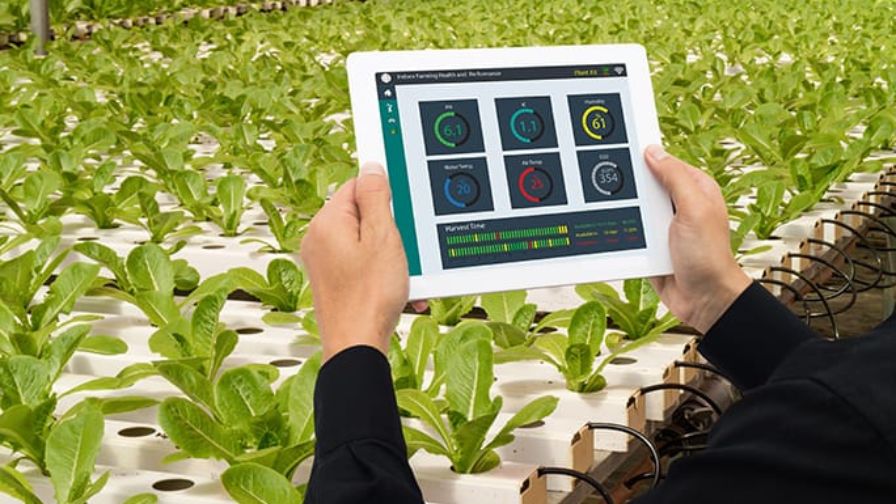
Horticulture facility lighting and climate management through tablet | Monopoly919, via DesignLights Consortium and Adobe Stock
Indoor growing is booming. The U.S. controlled environment agriculture (CEA) market is projected to grow at an annual growth rate of 24%. For growers, this creates both opportunities and challenges.
CEA has shown the ability to maintain or improve productivity while using less space and fewer resources, but energy costs are still a top concern. A USDA study confirms that lighting is the largest operational expense for most indoor farms. Recognizing this, the U.S. Department of Energy has urged growers to switch to LED technology, predicting this shift could reduce electricity consumption by 34% and save $350 million annually.
Why LEDs Are Ideal for Greenhouses
LED horticultural lighting is transforming how growers think about energy and crop performance. The DesignLights Consortium (DLC), a nonprofit dedicated to accelerating the adoption of energy-efficient technologies, works with utilities, manufacturers, and other stakeholders across North America to develop and continually update a centralized set of horticultural lighting requirements. These requirements serve as a basis for testing and evaluating LED-based horticultural lighting solutions, resulting in a list of more than 1,100 qualified LED fixtures from nearly 150 manufacturers called the Horticultural Qualified Products List (Hort QPL). Each fixture undergoes rigorous testing for safety, efficacy, and more. Unlike traditional high-pressure sodium lamps, horticultural LEDs listed on the DLC’s Hort QPL are more than 35% more energy efficient and are backed by a suite of state and utility incentives.
Understanding the Unique Needs of Growers
Not all LED-based horticultural lighting solutions are the same and there are many options to evaluate when selecting a product. Below are a few things that growers need to consider to ensure their lights do what is expected:
- Photosynthetically Active Radiation (PAR): LEDs must emit light within the 400–700 nm spectrum, essential for optimal plant growth. PAR is the basis for metrics like Photosynthetic Photon Efficacy (PPE), which is needed to evaluate how efficiently these lights produce light in the PAR region from the total input wattage. All products on the DLC’s Hort QPL rely on and communicate specific PAR flux in order to qualify for the list.
- Crop-Specific Lighting: Different plants respond to specific light spectra, which can affect growth rate, flowering, and leaf coloration. All products listed on the DLC’s Hort QPL communicate the specific spectral output from that product to support growers looking to elicit specific photo-morphological outcomes.
- Environmental Integration: Changes to the grow lights also need to be considered against other non-lighting system operations to ensure the environment is optimal for the crops being grown. For example, lights must work seamlessly with HVAC, shading, and irrigation to maintain balanced temperature, humidity levels, vapor pressure deficit, and more.
- Light Pollution Control: For greenhouse growers, managing external light pollution is crucial for community relations and environmental compliance.
Choosing the Right LED Solution
Growers should carefully evaluate their lighting options to ensure maximum efficiency and crop performance. Some key questions include:
- What intensity and spectrum of light does my crop require?
- Can my HVAC system handle the lower heat output of LEDs?
- Are there rebates available for switching to DLC-qualified products?
- Does the system support advanced features like spectral tuning and automated DLI control?
The DLC’s Hort QPL is a reliable resource that provides growers with detailed information on product specifications, including cooling methods, controllability features, and application-specific suitability. Accessing the QPL is simple: create a free MyDLC account, browse the database, and compare products tailored to your needs.
A Bright Future for Greenhouse Lighting
For growers looking to maximize yields while minimizing costs, horticultural LEDs are an investment in the future. With vetted, high-quality products listed on the DLC’s Hort QPL, you can make informed decisions that benefit your bottom line and the environment.

